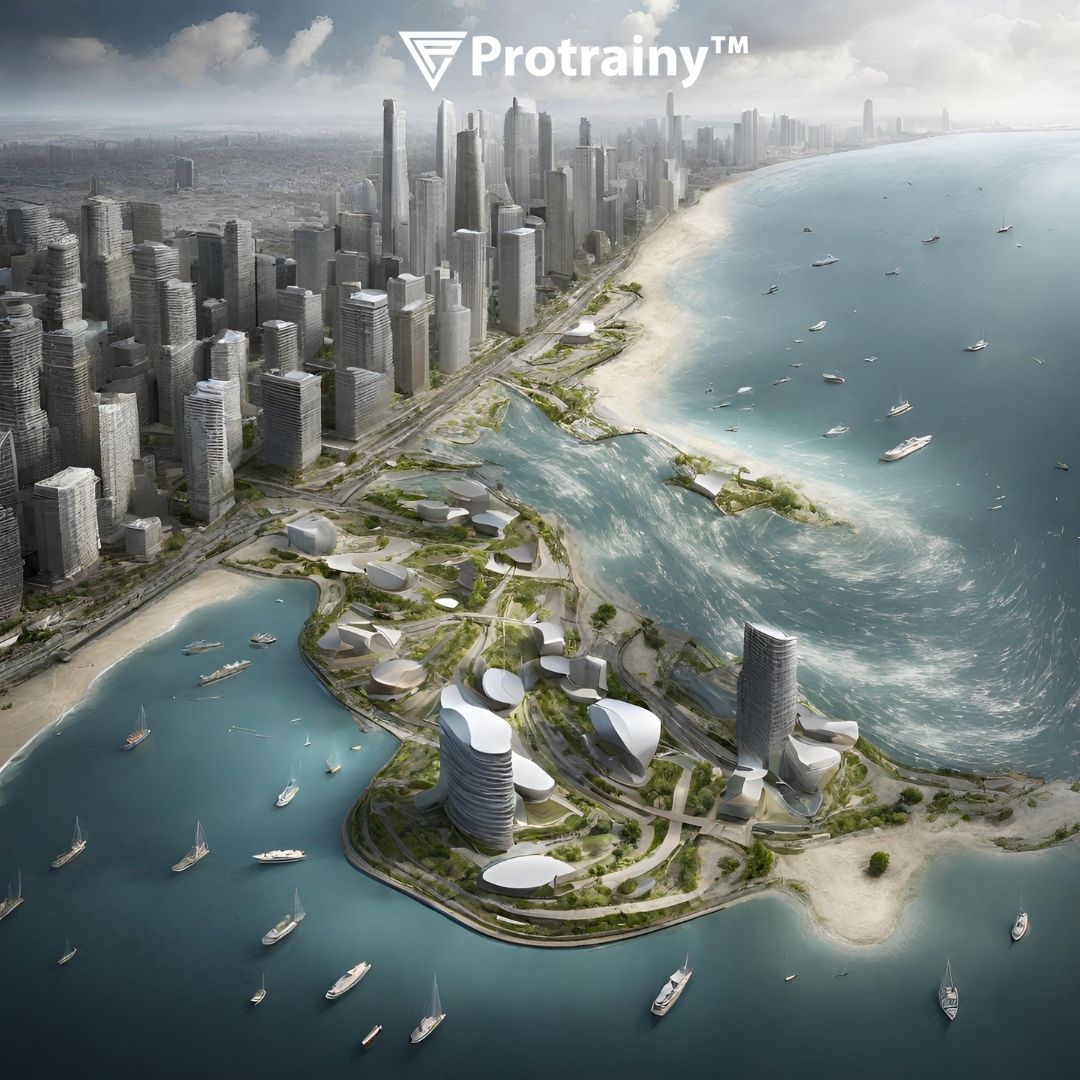Blogs
- Home
- Blogs
Resilient Coastal Cities: Battling the Elements with Ingenious Engineering
Protrainy | Sept. 1, 2023, 2:03 p.m.

Introduction :
Coastlines have always been attractive places for humans to settle due to their beauty, resources, and opportunities. However, as climate change brings rising sea levels and more powerful storms, coastal cities are now facing significant environmental threats. In this blog, we will explore the field of engineering for resilient coastal cities, discussing the real challenges they face and the creative solutions being implemented to shape the future of these areas.
Coastal Cities at Risk: The Reality of Sea-Level Rise and Storms
Coastal cities are increasingly vulnerable to the effects of rising sea levels and intense storms. As the seas encroach on land and hurricanes become more frequent and destructive, these cities must quickly adapt and strengthen their defenses.
The Power of Nature: Engineering Coastal Defenses
To combat the power of the ocean, coastal cities utilize various engineering structures like seawalls, revetments, and breakwaters. These structures serve as barriers, absorbing and redirecting wave energy to minimize erosion and mitigate storm damage. Engineers are now turning to nature-inspired solutions such as living shorelines. These incorporate vegetation, oyster reefs, and marshes to provide natural protection against erosion, while also creating habitats for wildlife and enhancing the visual appeal of coastal areas.
Resilient Building Practices
New construction practices involve elevating buildings above expected flood levels, with parking and storage areas located below. Pilings and foundations are designed to withstand the corrosive effects of saltwater to ensure the longevity of coastal structures. Maintaining sandy beaches is essential for coastal protection. Beach nourishment involves replenishing eroded shorelines with imported sand, not only fortifying natural defenses but also supporting tourism and recreation, both vital components of coastal economies.
Dunes act as natural defenses against storm surges, and their restoration is an important strategy for resilient coastal cities. Engineers work alongside nature to rebuild and strengthen dune systems, often incorporating native vegetation to stabilize these sandy mounds. With rising sea levels leading to increased salinity in groundwater and flooding, integrated water management systems are crucial. Coastal cities are implementing strategies that combine stormwater management, wastewater treatment, and freshwater supply to ensure sustainable access to clean water.
Case Study:
The Netherlands, with its extensive coastline and low-lying terrain, has become a global leader in coastal resilience engineering. The Delta Works, a sophisticated system of dams, locks, sluices, dykes, and storm surge barriers, showcases the Dutch approach to coastal protection. This engineering marvel safeguards the country against the fury of the North Sea and provides valuable lessons in resilience for the rest of the world. The benefits of engineering solutions for resilient coastal cities go beyond just flood control. By protecting infrastructure and communities, these measures safeguard livelihoods, economies, and cultural heritage. They also enhance the overall quality of life, ensuring that residents can continue to enjoy the unique environments coastal areas offer.
Conclusion:
Resilient coastal cities are at the forefront of the fight against the immediate impacts of climate change. The engineering solutions being implemented are practical, sustainable, and driven by the need to preserve coastal treasures. As sea levels rise and storms become more severe, the role of civil engineers is increasingly crucial. By fortifying coastal cities with innovative defenses, we not only protect the present but also secure a sustainable future for generations to come. Resilient coastal cities serve as a testament to human ingenuity, determination, and the unwavering desire to thrive in the face of adversity.
